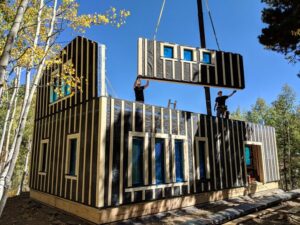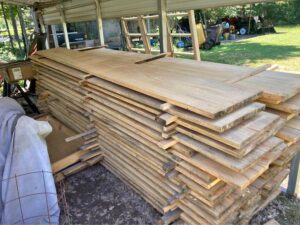Tiny House Prefab Kits: From DIY Dreams to Snap-Together Simplicity
So, you’re thinking about building a tiny house — exciting! But maybe the idea of cutting every board yourself or figuring out framing with a YouTube video and a prayer is a little… daunting. The good news? Prefab kits offer a happy middle ground between building from scratch and buying a move-in-ready tiny home.
Prefab (short for prefabricated) tiny house kits come in a range of styles, levels of completion, and price points — from the adventurous, tool-in-hand DIY kits to ultra-modern systems that practically snap together. Some don’t even require you to lift a hammer.
Let’s walk you through the four main options, what you can expect, and the pros and cons of each.
1. Full DIY Component Kits
What they include:
These kits are essentially a bundle of raw materials — think lumber, hardware, fasteners, insulation, and basic blueprints. You get everything you need to build, but you’re responsible for every cut, measurement, and nail.
Perfect for:
Experienced DIYers or those who want to learn by doing, and save money in the process.
Pros:
- Most affordable option
- Offers full creative control
- Great learning experience
- Can be modified as you go
Cons:
- Time-consuming
- Requires tools, workspace, and skills
- Higher margin for error
- No “plug and play” simplicity
2. Precut Kits with Prebuilt Frames
What they include:
These kits come with materials already cut to size, and often include framed walls, roof trusses, and sometimes even windows and doors. Instructions are typically more detailed, and the build is much faster.

Perfect for:
People with basic construction experience who want a manageable weekend project or those working with limited time.
Pros:
- Faster than full DIY
- Fewer tools required
- Less room for error
- Still allows a hands-on experience
Cons:
- Less customization
- More expensive than raw material kits
- Must follow the plan closely
- Still requires some physical labor and tools
3. Modular Segment Kits (“Click Together” Builds)
What they include:
These are high-end prefab kits where entire sections of the house — walls, floor panels, roof pieces — arrive fully constructed and are designed to connect quickly on-site, like an IKEA house for grown-ups.
Perfect for:
Those who want the speed and ease of assembly, with minimal tools and effort. Great for families, retirees, or remote installations.
Pros:
- Easiest and fastest to assemble
- Minimal tools or experience needed
- High quality and precision
- Can be up and livable in a matter of days
Cons:
- Most expensive kit option
- Limited design flexibility
- Requires access for delivery (large panels)
- May still need permits and site prep
4. Fully Built Tiny House Delivery
What it includes:
The entire house — interior finished, plumbing and wiring installed, insulation complete — arrives ready to live in, delivered by truck and placed directly on your prepared foundation or pad. In many cases, these homes are built off-site by professionals in controlled environments.
Perfect for:
Anyone who wants a turnkey home with zero construction, or those unable or unwilling to build themselves.
Pros:
- Absolutely no building required
- Built by professionals
- Predictable costs and timeline
- Move-in ready almost immediately
- Ideal for permanent installations or fast deployment
Cons:
- Highest upfront cost
- Delivery logistics (access, crane or large truck required)
- Heavier permitting requirements in some areas
- Less personalization unless custom-ordered
A Few Things to Consider Before Choosing a Kit
- What’s your budget? Kits range from a few thousand dollars to over $100,000 depending on the type and finish.
- What’s your timeline? DIY builds can take months; modular and full builds can be installed in days.
- Do you enjoy building? If so, DIY or precut kits are perfect. If not, prefab or turnkey solutions are better.
- Local zoning rules? Check building codes and parking/foundation regulations for your area.
- How will it be delivered? Some options require flatbed trucks, cranes, or even pilot cars depending on the size.
Final Thoughts: Building Your Home, Your Way
Tiny house prefab kits make the dream of simple, intentional living more accessible than ever. Whether you’re craving a hammer-in-hand experience or want to wake up next week in a finished home of your own, there’s a solution to fit your lifestyle, budget, and timeline.
Remember: going tiny doesn’t mean giving up comfort — it just means choosing what truly matters.


